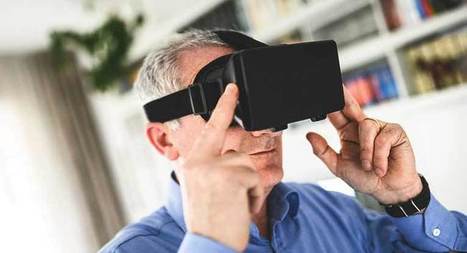Virtual reality has been making headlines for its potential to transform the ways we interact with our environments.
Breakthrough technologies like the Oculus Rift headset have made for incredibly lifelike experiences, notably in gaming and other forms of digital entertainment.
Aside from its boom in the media sector, virtual reality has also emerged as an innovative tool in healthcare.
Both virtual and augmented reality technologies are popping up in healthcare settings such as operating rooms, or being streamed to consumers via telehealth communications. In many cases, virtual reality has enabled medical professionals to execute care more safely and effectively.
As virtual and augmented realities enter the mainstream, the technologies have become more accessible to the general consumer population.
With a $15 price tag, Google Cardboard allows users to stretch physical limits with a smartphone — no extensive scientific knowledge required. That same philosophy is being applied to virtual reality in the healthcare industry, empowering patients to take charge of their health.
Dr. Leslie Saxon, founder and executive director of the USC Center for Body Computing, is leading several initiatives to make virtual and mixed reality more patient friendly.
The center’s Virtual Care Clinic system features an app that connects patients to medical expertise similar to what they would receive at the doctor’s office. The app displays Saxon’s image, guiding users through different courses of medical care.
But patients using the app aren’t interacting with Saxon herself. Instead, they are following instructions issued by a virtual rendering of the doctor.
Using a virtual human agent may seem like a detached method of doctor-patient communication, but Saxon believes it to be the exact opposite. With this kind of technology, she told Healthline, patients could get their questions answered in an environment free from judgment. They can access information on their own time and at their own pace.
Via nrip



 Your new post is loading...
Your new post is loading...







